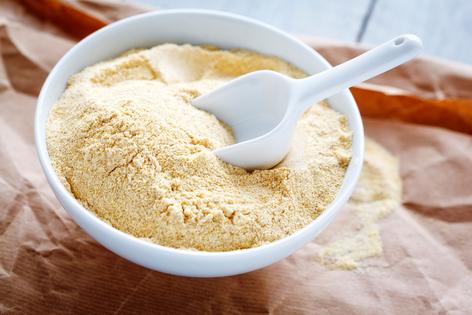Environmental Nutrition: The latest in egg substitutions
The egg has a long culinary history because of its usefulness in leavening, binding, structure and texture. Eggs provide the stickiness that's required for baked goods. The protein in the egg provides structure and the fat provides textural moistness. The science of baking involves creating an end product that will maintain structure and height, with softness and moisture. Replacing eggs, therefore, is a tactical science. Read on for the latest egg substitutions for those with allergies or dietary preferences.
Flaxseeds and chia seeds
These nutrient-dense, omega-3 rich seeds make excellent egg replacements. To use in recipes, whisk one tablespoon of ground flax or whole chia seeds with three tablespoons of water and let sit for 20 minutes. The mixture will turn gelatinous with a texture not too different from egg whites. The fat and protein in these seeds can replace the texture and structural role of eggs in many recipes; the downside is that they may impart a grainy or nutty taste.
Aquafaba
When it comes to making meringue and macaroons, in which eggs go beyond simple baking properties, aquafaba (the liquid left over from cooked or canned beans) may come in handy. Developed by an engineer who found that canned chickpea water makes an excellent egg replacer, aquafaba (which means "water" and "bean" in Latin) relies upon the bean protein and starch remaining in the water to replicate the role of egg whites. About three tablespoons can replace one egg; just mix the bean liquid with an electric mixer until it becomes stiff.
The Vegg
Marketed as an egg yolk replacement, The Vegg is made primarily from nutritional yeast and can be used to make French toast, hollandaise sauce, scrambled "eggs," and even a spherical yellow "egg" yolk. The company makes other egg-free mixes, including a product designed for baking.
The VeganEgg
Follow Your Heart, the maker of popular dairy- and egg-free products, recently developed VeganEgg, a whole egg replacement that can be used in cookies, muffins, cakes, and scrambled "eggs." Created to resemble cooked eggs, this powdered egg substitute takes the form and taste of eggs when water is added. It's made from an algae-based, gluten-free flour.
Chickpea flour
Chickpea flour can be used to make an omelet or crepe that can be filled with the same ingredients as a traditional egg omelet. Preparation is similar to making pancakes: mix the flour, water, spices and preferred vegetables in a bowl, and pour into a heated skillet to cook. The texture is surprisingly egg-like!
(Environmental Nutrition is the award-winning independent newsletter written by nutrition experts dedicated to providing readers up-to-date, accurate information about health and nutrition in clear, concise English. For more information, visit www.environmentalnutrition.com.)







